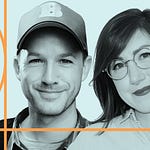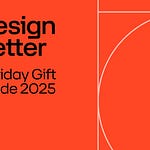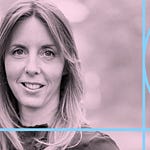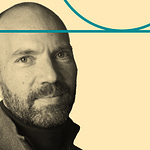In this issue of The Brief:
Living a multidisciplinary creative life
Job opportunities
Things to watch, read, and explore
Check out our new, expanded library, with books on Design Systems, DesignOps, Designing for Emotion, and more.
Stop specializing—live a multidisciplinary creative life
By Eli Woolery
If there’s one thing we’ve learned from the multitude of people we’ve interviewed for Design Better, it’s that the most innovative creators of our time share an unlikely trait: they refuse to stay in their lane. While conventional wisdom pushes specialization, these polymaths build careers by following curiosity across fields—from nuclear engineering to footwear design, from video games to graphic novels.
In my own career, it took me many years to realize this, and in some ways my journey began the day after my son was born.
I remember that day as unseasonably hot. September 2015 on the Monterey Peninsula—the kind of clear, warm day that follows long stretches of coastal fog. After leaving the hospital where my wife Courtney was recovering with our newborn, I grabbed a quick (wife-sanctioned) surf. The clear horizon promised a month of record warmth ahead.
At home, I checked email before setting up my auto-responder for two weeks of paternity leave. Near the top of my inbox: a message from our startup's CEO. Not what I expected.
The gist: "We're sorry, but our co-founders had a fight, the company is splitting up, and we have to lay you off."
Panic. Losing my job right after our second child wasn't the plan, especially since we'd just moved to the Monterey Peninsula in an era before remote work was widespread.
I delivered the news to Courtney at the hospital along with her Starbucks coffee, and couldn’t find anything comforting to say. She ended up reassuring me—we were going to be OK.
And we were. It became a rare chance for me to spend real time with our newborn son, young daughter, and Courtney. Time to reflect on what came next. And I had a secret weapon—something I hadn't always considered a strength.
Living a multi-disciplinary creative life
Before college, I loved drawing and thought I'd become an illustrator. My parents and I remember this differently, but as I recall, they encouraged a broader education—and I'm grateful they did.
I studied product design at Stanford, where I now teach. In the late 90s, that meant physical products, and with my love for the outdoors, I hoped to design climbing or camping gear.
But companies didn't know what to do with me. They wanted an industrial designer or a mechanical engineer. Product design—at least Stanford's version—blended both, but emphasized human-centered design as its foundation.
Frustrated and unable to land a “real” product design job, I took an internship in Bermuda, learning to scuba dive and helping researchers. This led me to Light & Motion, a manufacturer of underwater camera equipment and bike lights. As a design engineer, I learned the challenges of manufacturing products that protect electronics under high pressure in corrosive seawater, and destroyed a lot of expensive camera equipment in the process.
Photography also grabbed me during my time there, along with marine biology. I went back for a master's degree in marine science, discovered I was a terrible scientist (though I loved the fieldwork), and decided to start an underwater photography magazine with a Stanford friend.
Three years of producing a beautiful magazine, world travel—and basically no money. Around the time my daughter was born, I was a freelancer creating websites and apps for clients, but wanted to try entrepreneurship again.
I got into a startup accelerator at Eric Schmidt's venture firm, Innovation Endeavors. Our team received funding to try different venture ideas. All crashed and burned. As Courtney and I discussed having a second child, the pressure for another “real” job became, well…very real.
Trying to make sense of my winding career path in a way that I hoped would appeal to potential employers, I created a timeline of my work since graduation up to 2015.
But what it demonstrated most convincingly was my short attention span. Who moves from physical product design to marine biology to magazine design to photography to apps to teaching in just over a decade?
Companies wanted specialists in tidy boxes, not jacks-of-all-trades.
















